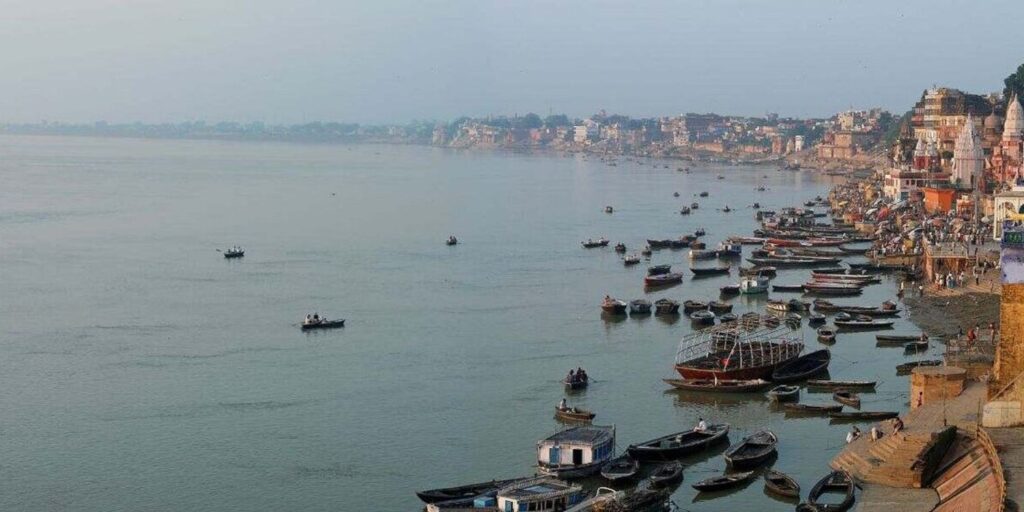From the Ganga’s sacred waters to the Godavari’s vibrant flow, these rivers tell tales of civilizations, spirituality, and the dynamic ecosystems they nurture.
An adventurous journey as we plan an odyssey along the rivers of India, exploring their significance, the cities they embrace, and the enchanting landscapes they carve.
Initially, in the heartland of India, where time intertwines with tradition and nature’s arteries carve pathways of history, a grand odyssey awaits along the sacred rivers that cradle the nation’s essence.
Furthermore, on this expedition, we immerse ourselves in the enchanting tales, cultural richness, and dynamic landscapes that flourish along the rivers of India.
From the Ganga’s divine currents to the Godavari’s vibrant flow, each watercourse weaves a narrative, intertwining spirituality, heritage, and ecological wonders.
Join us in planning an adventure along the rhythmic veins that sustain the essence of India – the rivers that flow as conduits of life, culture, and untold stories.
1. Ganga – The Sacred Flow
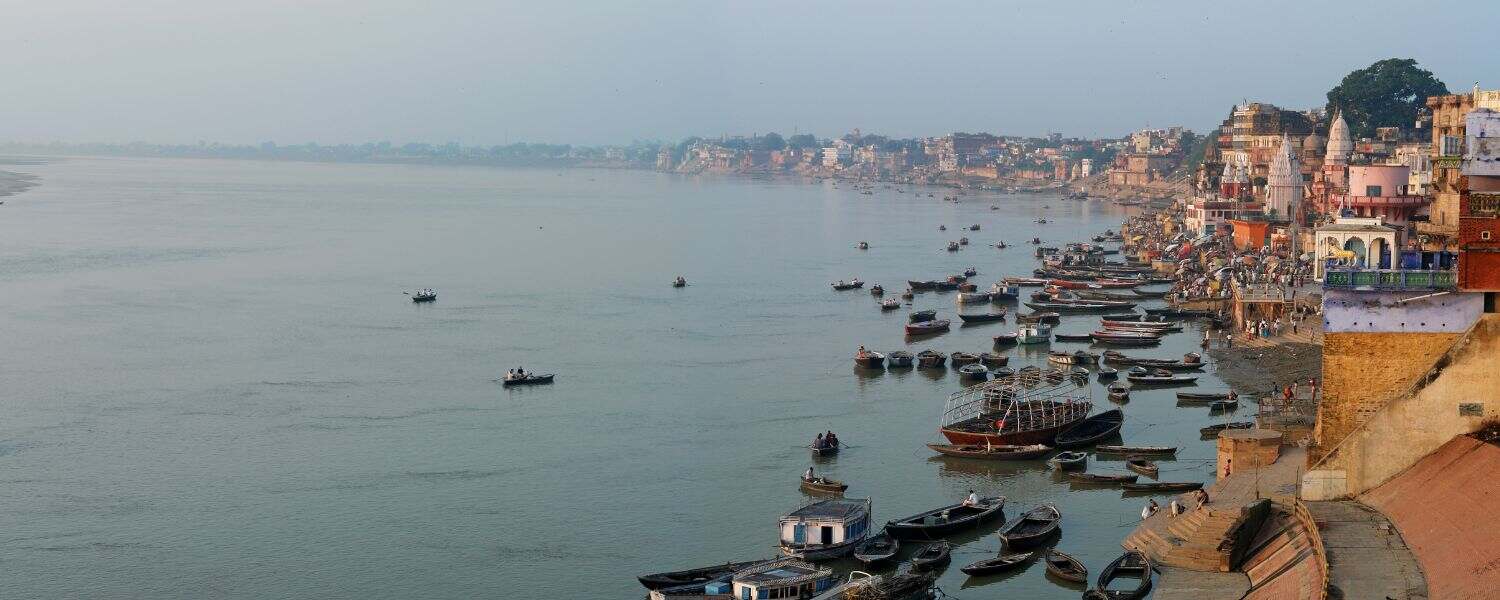
However, the Ganga, revered as the holiest of rivers, winds its way through the heartland of India. We begin our expedition in the spiritual city of Varanasi, where the Ganga Aarti casts a mesmerizing spell.
The blog dives into the cultural nuances along the ghats, the historical significance of Allahabad, and the ecological challenges facing the Ganges.
Moreover, the Ganga, often hailed as the holiest of rivers in India, weaves a sacred tapestry as it meanders through the northern plains. Its journey begins in the icy heights of the Himalayas, descending with the purity of pristine glaciers.
As the Ganga flows through Varanasi, Haridwar, and Rishikesh, it becomes a living testament to spiritual hunger.
The river is not merely water but a divine flow carrying millions of hopes, dreams, and rituals.
Initially, its sacred waters are believed to cleanse the soul, and the Ganga Aarti in Varanasi illuminates the riverbanks with a celestial dance of light and devotion, marking the spiritual heartbeat of the city.
The Ganga isn’t just a river; it’s a sacred flow connecting the terrestrial with the divine, embodying the essence of purity and spirituality.
2. Yamuna: A Confluence of Heritage
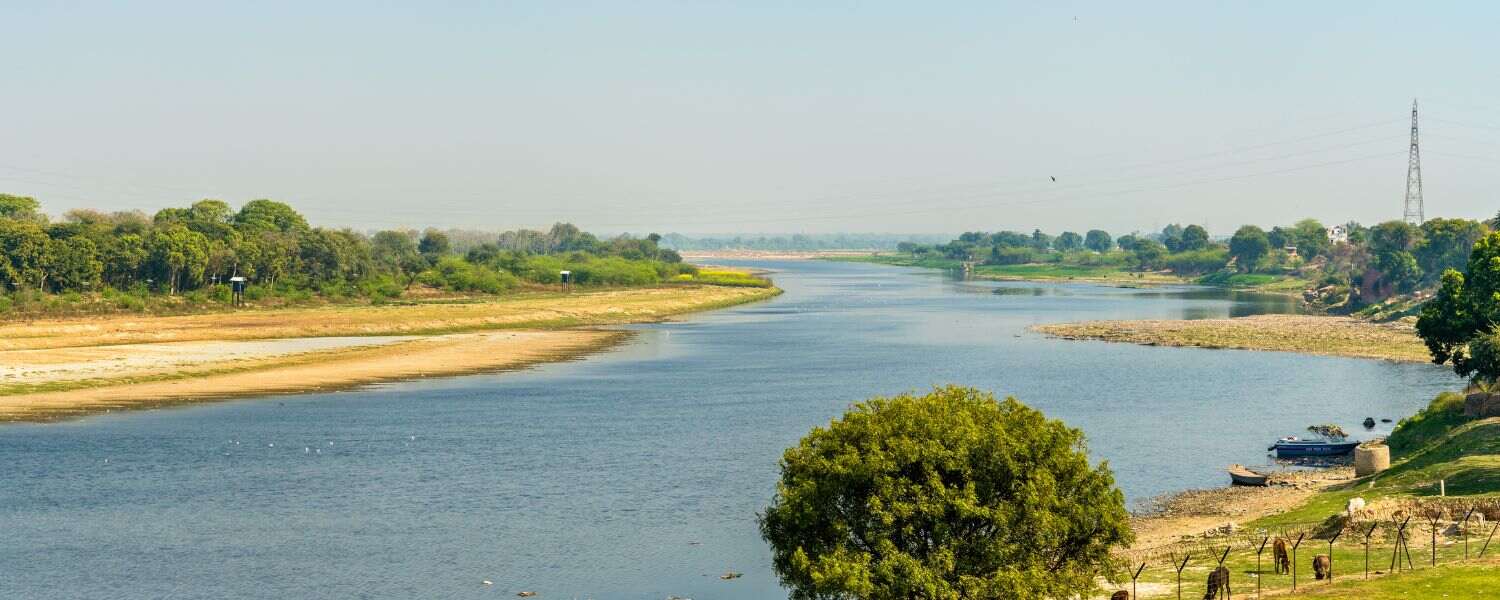
Additionally, as we follow the Yamuna, the silent tributary of the Ganga, we explore the historical gems lining its banks. Delhi, Agra, and Mathura unfold tales of heritage, Mughal architecture, and the symbiotic relationship between the river and these ancient cities.
The chapter delves into conservation efforts and the challenges faced by the Yamuna in contemporary times.
The Yamuna, a confluence of heritage, paints a historical canvas as it winds its way through the heartland of North India. Delhi, Agra, and Mathura are the Yamuna’s cultural wealth guardians.
Moreover, the riverbanks tell tales of Mughal splendor, witnessing the architectural marvels of the Taj Mahal and the Red Fort.
As the Yamuna flows, it becomes a silent witness to the chapters of history that have unfolded along its shores.
The Yamuna is more than a river; it’s a custodian of India’s heritage, a flowing chronicle echoing the footsteps of emperors and the whispers of bygone eras.
Initially, it intertwines with the nation’s fabric, connecting the present to its illustrious past, making it a confluence where heritage meets the modern pulse.
The Yamuna isn’t just a river; it’s a living testament to the timeless heritage etched along its sacred waters.
3. Brahmaputra – Roaring Through the East

Heading east, we encounter the mighty Brahmaputra, a river with a wild spirit. Exploring Assam, we unveil the Brahmaputra floodplains’ unique ecosystems, the Majuli culture, and the erosion challenges.
The Brahmaputra, often referred to as the “Roaring River” or the “Sons of Brahma,” emerges as a mighty force in the eastern realms of India.
Moreover, originating from the Tibetan plateau, this river embarks on a tumultuous journey through Assam, carving a path through the lush landscapes of the northeastern states.
The Brahmaputra is more than a river; it is a force of nature, a wild symphony echoing through the valleys and floodplains.
Additionally, as it navigates Assam’s fertile plains, the Brahmaputra becomes a lifeline for the region, sustaining diverse ecosystems and supporting unique cultures.
Majuli, the world’s largest river island, adds a cultural charm to the Brahmaputra’s narrative.
However, this mighty river also poses challenges, with annual floods shaping the landscape and the lives of those residing along its banks.
The Brahmaputra isn’t just a river; it’s a dynamic force that shapes the landscapes and cultures of the eastern frontier.
4. Narmada: The Life Giver

Moreover, our journey takes us to the Narmada, celebrated as the life-giving river. From the marble rocks of Bhedaghat to the ancient temples of Maheshwar, the Narmada Valley is a gem trove of genuine and artistic wonders.
Initially, in the heartland of India, the Narmada flows gracefully, earning its moniker as the “Life Giver.”
Originating from the Amarkantak Plateau, this river journeys through Madhya Pradesh and Gujarat, etching a serene path through the Indian heartland.
The Narmada isn’t just a river; it’s a source of life for the communities that thrive along its banks.
However, the riverbanks host a tapestry of cultural diversity, from the historical marvels of Maheshwar to the spiritual sanctuaries of Omkareshwar.
The Narmada’s waters are believed to possess purifying qualities, attracting pilgrims seeking spiritual solace.
However, it’s not just a spiritual conduit; the Narmada plays a crucial role in sustaining agriculture, providing water for irrigation, and shaping the landscapes it touches.
Moreover, the Narmada isn’t merely a river; it’s a lifeline, a giver of life, and a custodian of the cultural heritage nestled along its gentle flow.
5. Godavari: A Tapestry of Cultures

Venturing south, the Godavari unfolds as a cultural tapestry, enriching the landscapes of Maharashtra and Telangana.
We explore Nashik’s Kumbh Mela, the historic town of Paithan, and the lush greenery of Rajahmundry.
However, the blog discusses the cultural diversity along the Godavari and the challenges posed by dam construction.
Flowing through the Deccan Plateau, the Godavari unfolds as a majestic river, weaving a rich tapestry of cultures.
Revered as the “Dakshina Ganga” or the Ganges of the South, the Godavari is more than a river; it’s a cultural confluence.
Originating from the Trimbak Plateau in Maharashtra, the Godavari meanders through central India, nurturing diverse communities.
Initially, its waters grace the ancient town of Nashik, host to the Kumbh Mela, one of the largest religious gatherings globally.
As the Godavari flows eastward, it becomes a lifeline for the fertile plains of Andhra Pradesh and Telangana, sustaining agricultural practices and vibrant traditions.
Rajahmundry, nestled on the Godavari’s banks, serves as a cultural hub, embodying the river’s influence on art, literature, and spirituality.
Moreover, the Godavari isn’t just a river; it’s a living testament to the harmonious coexistence of myriad cultures that thrive along its banks, shaping the very fabric of the Deccan.
6. Krishna – Of Legends and Landscapes
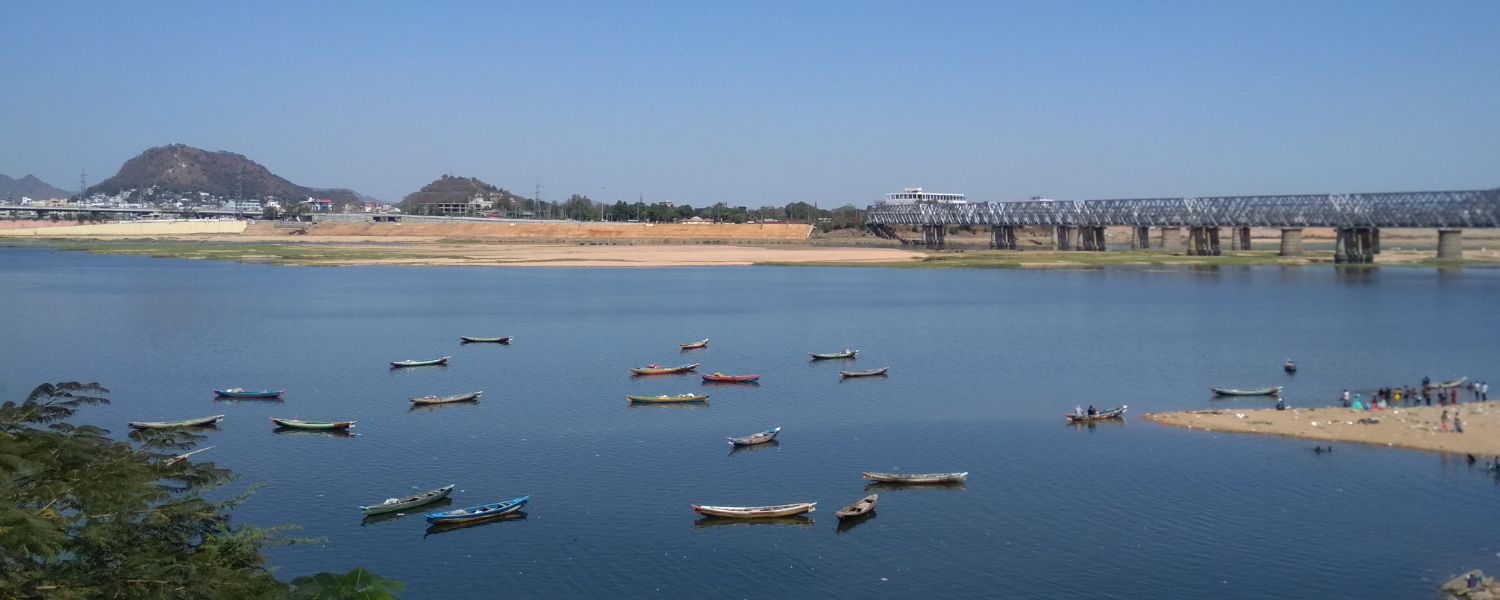
Moreover, our odyssey continues along the Krishna, a river steeped in mythology and history. We explore the ruins of Hampi, the cultural hub of Vijayawada, and the lush greenery surrounding the Krishna Delta.
The chapter delves into the ancient tales associated with the Krishna and the environmental issues affecting its flow.
The Krishna, a river steeped in mythology and natural beauty, courses through the Deccan Plateau, leaving a trail of legends and landscapes in its wake.
Originating from the Western Ghats, the Krishna flows through the states of Maharashtra, Karnataka, and Andhra Pradesh, etching its narrative on the Indian subcontinent.
The Krishna isn’t just a river; it’s a bearer of stories, especially associated with Lord Krishna’s childhood exploits along its banks.
However, the river’s journey paints a picturesque canvas, with lush landscapes and fertile plains defining its course.
As the Krishna meanders through ancient cities like Vijayawada and Hampi, it becomes a lifeline for agriculture and sustains communities’ livelihoods along its banks.
The Krishna River isn’t merely a geographical feature; it’s a reservoir of myths, a source of life, and a sculptor of landscapes that narrate tales of both divine and earthly significance.
7. Kaveri – From Hills to Deltas
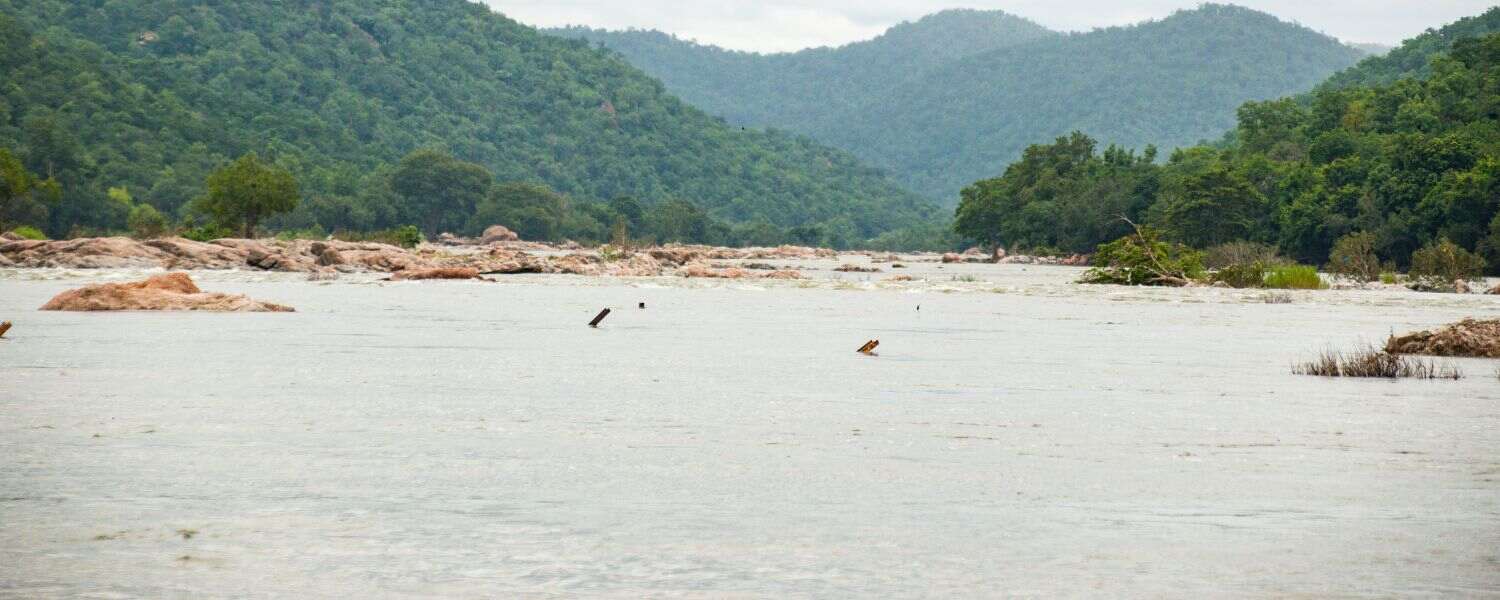
Heading towards the southern tip of India, the Kaveri takes center stage. From the hills of Coorg to the deltas of Tamil Nadu, we explore the diverse landscapes shaped by this river.
The blog discusses the water-sharing disputes, the agricultural importance of the Kaveri, and the cultural heritage it nourishes.
However, the Kaveri River, often revered as the “Ganga of the South,” embarks on a picturesque journey from the Western Ghats to the Bay of Bengal, creating a diverse tapestry of landscapes and cultures.
Moreover, originating from Talakaveri in the Coorg district of Karnataka, the Kaveri cascades down the hills, forming a lifeline for the regions it traverses.
The river isn’t merely a geographical entity but a cultural and ecological lifeline sustaining many communities.
As the Kaveri flows through Karnataka, Tamil Nadu, and Puducherry, it transforms landscapes, shaping lush forests, fertile plains, and vibrant deltas.
The river’s waters are harnessed for agricultural practices, making it a crucial source of irrigation for the region’s agricultural economies.
Moreover, the Kaveri also holds immense cultural significance, with the town of Srirangapatna and the temple town of Talakadu echoing tales of historical and mythological importance.
The Kaveri’s journey is a dynamic spectacle, transitioning from the serenity of the hills to the vibrant deltas near the Bay of Bengal.
The delta regions, particularly in Tamil Nadu, showcase the river’s influence on agriculture and biodiversity, creating a harmonious coexistence between nature and human civilization.
However, the Kaveri River is not just a source of sustenance; it’s a subject of ecological concern and interstate disputes.
Conclusion
As our river odyssey concludes, we reflect on the diverse landscapes, cultural legacies, and environmental challenges that define the rivers of India.
The blog emphasizes the need for sustainable practices, conservation efforts, and a deeper understanding of these rivers’ cultural, historical, and ecological significance.
The rivers of India, intertwined with the nation’s identity, continue to flow as conduits of life, carrying stories of civilizations, spirituality, and the ever-changing landscapes they nurture.
Join us in planning your adventure along the rivers of India, and immerse yourself in the rich tapestry that unfolds along their banks.
As we draw the curtains on our voyage along the sacred rivers of India – from the ethereal Ganga in the north to the cultural tapestry of the Godavari in the south – we find ourselves immersed in a symphony of stories, spirituality, and ecological wonders that define the essence of this diverse nation.
The phrase “Rivers of India” becomes a geographical designation and a poetic expression encapsulating the land’s heartbeat.
Our journey commenced on the sacred banks of the Ganga, where the Ganga Aarti in Varanasi became a celestial dance, marking the beginning of our exploration into the spiritual currents of this holiest of rivers.
As we traced the Yamuna’s ripple, the historical places of Delhi, Agra, and Mathura unfolded, echoing tales of heritage and resilience.
The wild symphony of the Brahmaputra in Assam painted a portrait of untamed beauty, while the life-giving embrace of the Narmada revealed the heartland’s cultural treasures.
Ultimately, our odyssey along the rivers of India becomes an ode to the indomitable spirit of these waterways and the people they embrace.
